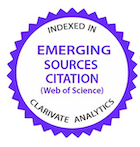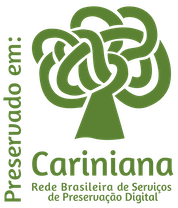Venografia digital contrastada in vivo de membro torácico e pélvico de ovinos e caprinos hígidos
DOI:
https://doi.org/10.1590/1809-6891v19e-51005Resumo
O exame venográfico permite diagnosticar e tratar afecções da região podal. Pode ser base de estudos sobre a administração de medicação na região do casco. O objetivo do estudo foi descrever o padrão venográfico na região distal dos membros torácicos e pélvicos de ovinos e caprinos saudáveis, bem como comparar a vascularização entre eles. Foram utilizados 10 ovinos e caprinos clinicamente saudáveis, cinco machos e cinco fêmeas de raças diferentes, com idade entre 2 a 4 anos e pesando 45 a 63 kg. Os membros torácicos e pélvicos foram submetidos à venografia contrastada da região distal. Os venogramas foram coletados por um aparelho radiográfico digital e analisados no software EcoView®. As veias da região do metacarpo e metatarso; as falanges proximal, medial e distal dos membros torácicos e pélvicos dos ovinos e caprinos foram identificadas 25-30 segundos após a injeção do contraste. O erro de técnica observado durante a venografia foi o extravasamento perivascular do contraste. Os venogramas revelaram a vascularização na região distal dos membros torácicos e pélvicos e a comunicação dos vasos entre eles. A projeção lateral foi a melhor projeção radiográfica para avaliar os vasos no venograma. O padrão venoso normal da região distal dos membros torácicos e pélvicos de ovinos e caprinos pode ser observado pela venografia.
Palavras-chave: dígito, venograma, ruminantes, raios-X, membros.
Downloads
Downloads
Publicado
Como Citar
Edição
Seção
Licença
Copyright (c) 2018 Ciência Animal Brasileira

Este trabalho está licenciado sob uma licença Creative Commons Attribution 4.0 International License.
Autores que publicam nesta revista concordam com os seguintes termos:
- Autores mantém os direitos autorais e concedem à revista o direito de primeira publicação, com o trabalho simultaneamente licenciado sob a Licença Creative Commons Attribution que permite o compartilhamento do trabalho com reconhecimento da autoria e publicação inicial nesta revista.
- Autores têm autorização para assumir contratos adicionais separadamente, para distribuição não-exclusiva da versão do trabalho publicada nesta revista (ex.: publicar em repositório institucional ou como capítulo de livro), com reconhecimento de autoria e publicação inicial nesta revista.
- Autores têm permissão e são estimulados a publicar e distribuir seu trabalho online (ex.: em repositórios institucionais ou na sua página pessoal) a qualquer ponto antes ou durante o processo editorial, já que isso pode gerar alterações produtivas, bem como aumentar o impacto e a citação do trabalho publicado (Veja O Efeito do Acesso Livre).






























